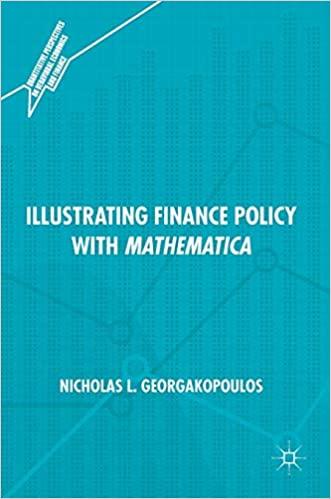Question
1. As a portfolio manager, you are responsible for a $150 million portfolio, 90 percent of which is invested in equities, with a portfolio beta
1. As a portfolio manager, you are responsible for a $150 million portfolio, 90 percent of which is invested in equities, with a portfolio beta of 1.25. You are utilizing the S&P 500 as your passive benchmark. Currently the S&P 500 is valued at 1202. The value of the S&P 500 futures contract is equal to $250 times the value of the index. The beta of the futures contract is 1.0. A. If you anticipate a cash inflow of $2 million next week, how many futures contracts should you buy or sell in order to mitigate the effect of this inflow on the portfolio's performance (rounded to the nearest integer)? B. If you anticipate a cash outflow of $5 million next week, how many futures contracts should you buy or sell in order to mitigate the effect of this outflow on the portfolio's performance (rounded to the nearest integer)? C. How many contracts should you buy or sell in order to increase the portfolio beta to 1.30 (rounded to the nearest integer)? D. How many contracts should you buy or sell in order to reduce the portfolio beta to 0.80 (rounded to the nearest integer)? E. You anticipate a decline in equity values and wish to hedge the portfolio. Calculate the number of contracts you would need to hedge your position and indicate whether you would go short or long.
2. Go to yahoo finance or other similar sites to find stock options quotes on your stock on December 4th for the month of December and January. Select the options with strike price at, above, and below the stock price. Make sure you make a note of whether the stock pays dividends. Fill in the table below and answer the questions:
|
|
| Call Premium | Put Premium | ||
| Stock Price | Strike Price | December | January | December | January |
From the call options above, identify those that are "in the money" and those that are "out of the money." Explain why the December and January call options that are out of the money still have value? Explain why the December and January put options that are out of the money still have values? Estimate the variance of your stock using five years returns. What is the value of the call and put option premium for all three strike prices assuming the risk free rate is 3% and the option expire on Thursday December 24 and Friday January 22, 2016. Explain what happens to delta of both options at different strike prices. Assume you have purchased 1 million shares of your stock. Show an optimal strategy to hedge against price decline.
3. Suppose bond A has 20 years left to maturity, an 8% coupon rate, pays interest semi-annually, and has a 6% yield to maturity and bond B has 25 years left to maturity, a 5% coupon rate, pays interest semi-annually, and has a 7% yield to maturity. What is the duration of each bond? What is the convexity of each bond? What are the optimal weights for bond A and bond B if the duration of your portfolio is 10 years? Supposed interest rate increases by 1%, estimate of the percent price change in each bond due to both duration and convexity. Which bond is preferred for a portfolio inclusion?
4. Refer to the table below. An international seafood supplier is offered 9.52 million yen today for 1000 pounds of abalone frozen in the shell. One thousand pounds of abalone can be sourced from various countries at the prices shown above. The current market exchange rates between the United States and the other relevant currencies are also shown. In addition, $1 U.S. = 102 yen. What is the value, in U.S. dollars, of the best deal the international seafood supplier can make?
Step by Step Solution
There are 3 Steps involved in it
Step: 1

Get Instant Access to Expert-Tailored Solutions
See step-by-step solutions with expert insights and AI powered tools for academic success
Step: 2

Step: 3

Ace Your Homework with AI
Get the answers you need in no time with our AI-driven, step-by-step assistance
Get Started


